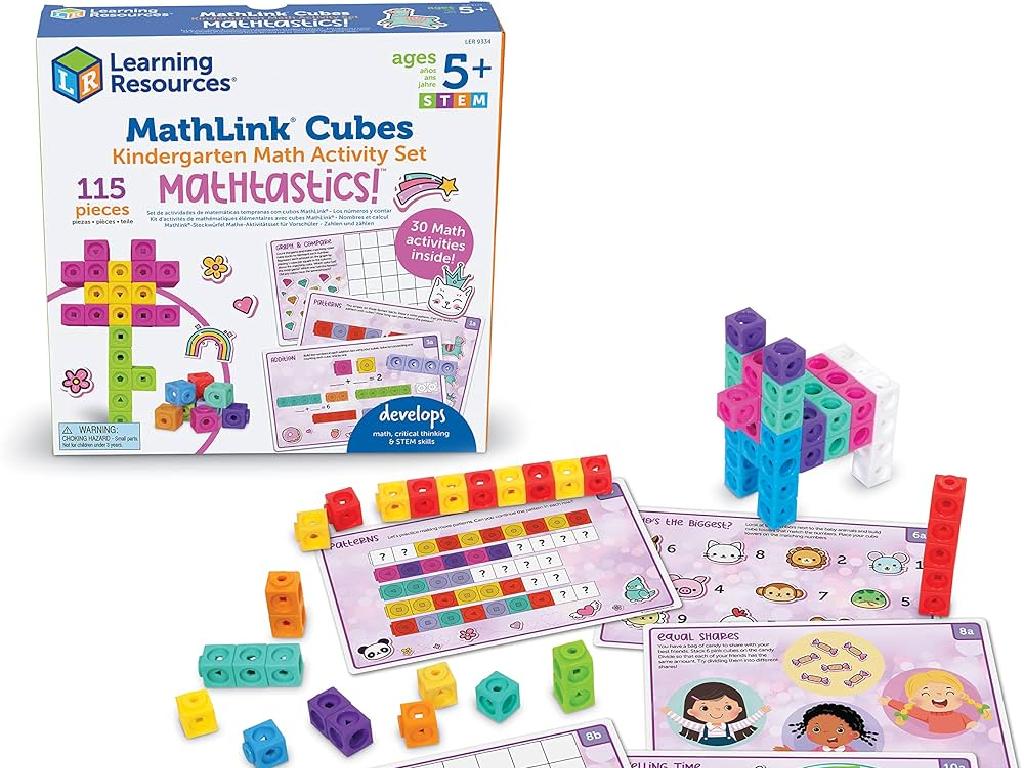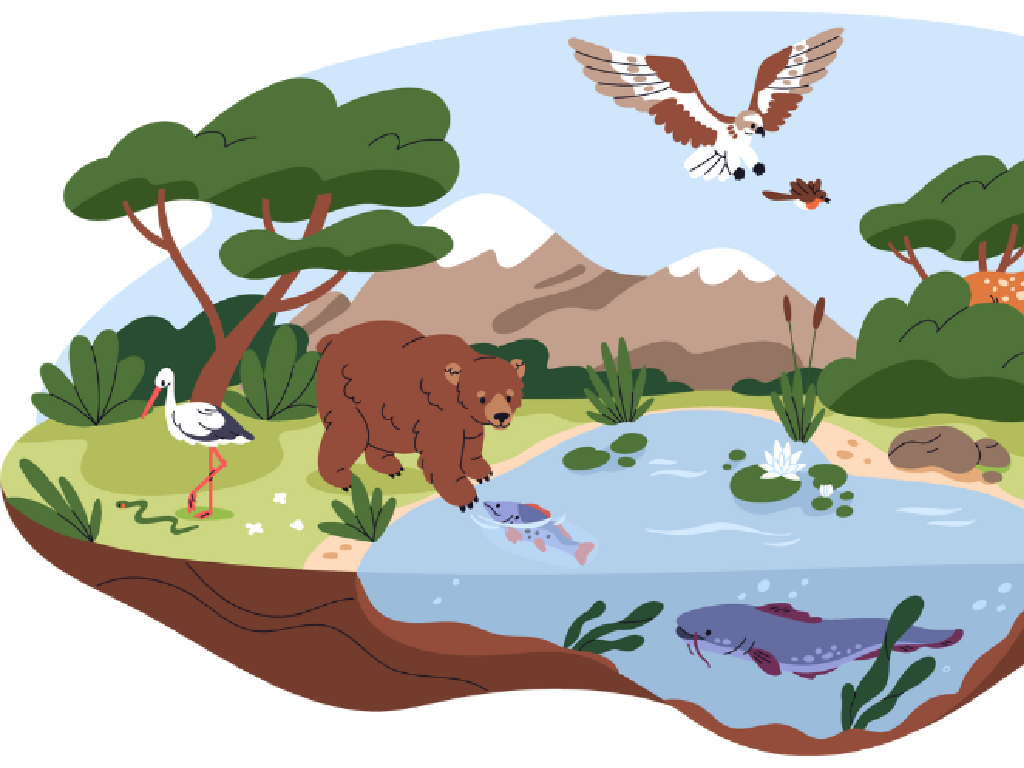Where Do Water Lilies And Saguaros Live?
Subject: Science
Grade: Kindergarten
Topic: Plants
Please LOG IN to download the presentation. Access is available to registered users only.
View More Content
Exploring Plant Habitats
– Learn about special plants
– Observe plant picture
– Look at the picture and describe what you see
– Discuss plant habitats
– Where do you think these plants live?
– Water lilies and saguaros
– Water lilies live in water, saguaros in the desert
|
This slide is designed to introduce Kindergarten students to the concept of plant habitats, focusing on water lilies and saguaros as examples. Begin by engaging the students’ curiosity about special plants. Show them a picture of water lilies and saguaros and ask them to describe what they see. This will help them connect visually with the topic. Discuss the different environments where plants can live and explain that water lilies thrive in watery environments while saguaros are found in dry, desert areas. Encourage the children to think about how different these plants’ homes are from their own. The goal is to foster an understanding of biodiversity and how different plants are adapted to their unique habitats.
Meet the Water Lily
– Water lilies float on water
– They live in ponds and lakes
– Lily pads are big and round
– Lily pads are not just for frogs! They’re part of the water lily plant.
– Lily pads help them float
– The pads keep the flower on the water’s surface.
|
This slide introduces kindergarteners to the habitat and physical characteristics of water lilies. Emphasize the beauty of water lilies and their unique ability to float on water surfaces due to their large, round leaves known as lily pads. Explain that these plants are commonly found in calm, freshwater environments like ponds and lakes. Use simple language to describe how the structure of lily pads aids in the plant’s flotation. You can bring in a small artificial pond setup or pictures to show water lilies in their natural habitat. Encourage the children to talk about any experiences they have had with ponds or lakes and to imagine what it would be like to see water lilies and their lily pads in real life.
Water Lilies: Floating Beauties
– Water lilies grow in sunlight
– They need bright light to flourish
– They live in fresh water
– Ponds and lakes are their homes
– Lilies help clean water
– They absorb pollutants, keeping water clear
– They shelter friendly fish
– Fish use lily pads for protection
|
This slide introduces the habitat of water lilies to Kindergarten students. Emphasize that water lilies require sunlight and fresh water environments like ponds or lakes to thrive. Explain how they contribute to the ecosystem by purifying the water and offering shelter to fish. Engage the students by asking them to think of other animals that might live among the water lilies, guiding them to consider frogs or insects. This will help them understand the interdependence of organisms within a habitat. Use simple language and encourage students to imagine a pond with water lilies and the various creatures that might be found there.
Meet the Saguaro Cactus
– Saguaros are very tall cacti
– They live in the desert where it’s hot and dry
– They can grow more than 40 feet
– That’s as tall as a four-story building!
– Saguaros have arms reaching for the sun
– Like they’re trying to hug the sunlight
|
This slide introduces the saguaro cactus to kindergarteners, emphasizing its distinctive features and habitat. Saguaros are iconic cacti known for their impressive height and arm-like projections. When discussing their size, relate it to something familiar to the students, such as a building they know. Explain that the arms help the saguaro get more sunlight, which is important for making its food through photosynthesis. Use simple language and encourage students to imagine the cactus reaching for the sun. You can also bring a small cactus to class to give them a tangible example of what a cactus feels like, but remind them that saguaros are much larger and can’t be brought into the classroom.
Habitats: Water Lilies and Saguaros
– Saguaros live in the desert
– The desert is a sandy, dry place with lots of sun.
– They store water to survive
– Saguaros have thick stems to hold water for a long time.
– Deserts are hot and dry
– Not much rain in the desert, very different from a pond.
– Compare desert and pond habitats
– Think about the weather, plants, and animals in both places.
|
This slide introduces the concept of different plant habitats, focusing on the saguaro cactus. Explain that saguaros are special plants that can live in very hot and dry places called deserts because they have adapted to store water in their thick stems. Encourage the children to think about how a desert is different from a pond, where water lilies live. Ask them to consider the weather, the types of plants they would find, and what animals might live there. This comparison will help them understand how plants adapt to their environment. For an activity, you could have the children draw a desert and a pond habitat or list animals and plants they might find in each.
Comparing Plant Homes: Water Lilies and Saguaros
– Water lilies love water
– They grow in ponds and lakes
– Saguaros need little water
– They thrive in the desert
– Ponds: Water lilies’ home
– Ponds are wet, great for lilies
– Deserts: Saguaros’ home
– Deserts are dry, perfect for saguaros
|
This slide aims to teach Kindergarten students about the different habitats of water lilies and saguaros. Water lilies require aquatic environments like ponds or lakes where they can float on the surface, while saguaros are cacti that store water and are well-suited to the arid conditions of the desert. Highlight the contrast between the cool, wet conditions of a pond and the hot, dry climate of a desert. Explain that both plants have special features that help them live in their respective homes. For example, water lilies have broad leaves to float and soak up sunlight, and saguaros have thick skins to retain water. Encourage the children to think about other plants and their habitats, and how each plant is perfectly adapted to its home.
Create Your Habitat: Water Lilies & Saguaros
– Make mini habitats today
– Blue paper is for water lilies
– Water lilies live in ponds, so we use blue to represent water
– Brown paper is for saguaros
– Saguaros live in the desert, brown shows the sandy desert
– Place paper plants in habitats
|
This class activity is designed to help Kindergarten students understand the concept of habitats and where certain plants live. By using colored paper to represent different habitats (blue for water/ponds and brown for desert), students can visually and tactilely engage with the material. Provide pre-cut paper water lilies and saguaros for the students to place on the corresponding colored paper. This hands-on activity not only reinforces the lesson on plant habitats but also aids in developing fine motor skills. Teachers should walk around the classroom to assist students as needed and engage with them by asking why they think each plant lives in its respective habitat. Possible variations of the activity could include using real plants, drawing additional habitat elements like fish or cacti, or even creating a 3D habitat model with clay.





